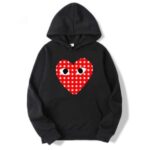Embroidery adds a timeless, professional touch to clothing and accessories, turning simple fabrics into stunning showcases of style and branding. Whether you’re a fashion designer creating bespoke pieces, a business outfitting a team, or a crafter personalizing accessories, high-quality embroidery makes all the difference. The secret behind flawless stitching lies in digitizing, the process of converting images into machine-readable files that guide your embroidery machine. With the right approach, digitized designs elevate your creations to a professional level. This guide explores how to use digitized embroidery to enhance fashion, uniforms, and accessories, offering tips to achieve stunning results.
What Is Digitized Embroidery?
Digitized embroidery involves transforming a digital image, like a logo or pattern, into a file format (such as PES, DST, or JAN) that an embroidery machine can read. This file includes instructions for stitch types, directions, density, and colors, ensuring the design stitches out accurately. Unlike a basic image, a digitized file is tailored to your machine and fabric, preventing issues like puckering or thread breaks.
For fashion, uniforms, and accessories, digitizing ensures designs look crisp and durable. Professionals use software like Wilcom or Hatch Embroidery to create files, but beginners can start with free tools like Ink/Stitch. This process is key to producing polished embroidery that enhances your brand or personal style.
Why Digitized Embroidery Matters
High-quality embroidery sets your creations apart. In fashion, it adds intricate details to dresses, jackets, or scarves, creating a premium look. For uniforms, it ensures logos are consistent and professional, boosting brand credibility. Accessories like bags or hats gain personality with custom embroidery, making them ideal for gifts or retail.
Poor digitizing, however, can ruin your efforts. Distorted logos, uneven stitches, or thread breaks make designs look sloppy, undermining your brand or project. Proper digitizing ensures durability, so your embroidery withstands washing and wear. By mastering or outsourcing this process, you create designs that leave a lasting impression.
Tools for Digitizing Embroidery
To create digitized embroidery files, gather the right tools. A reliable computer runs digitizing software smoothly, and a graphics tablet can help with tracing, though it’s optional. A standard laptop works fine for most users.
Digitizing software is essential. Free tools like Ink/Stitch (an Inkscape extension) support formats like PES and DST, making them great for beginners. Paid programs like Brother PE-Design, Wilcom EmbroideryStudio, or Hatch Embroidery offer advanced features for professional results, including custom stitch types and fabric optimization. Embrilliance is a user-friendly, affordable option for all skill levels. Test free trials to find the best fit.
You’ll need a USB drive or direct connection to transfer files to your machine. A vector-based editor like Adobe Illustrator or CorelDRAW helps prepare images by converting them to scalable formats, ensuring clean designs. These tools make digitizing accessible and effective.
How to Digitize for Fashion, Uniforms, and Accessories
Follow these steps to digitize a design for your embroidery machine. Start with a high-quality image, ideally a vector file (SVG or AI) for sharp details. If using a raster image (PNG or JPEG), ensure it’s at least 300 DPI.
- Import the Design: Open your digitizing software and load the image. Resize it to fit your machine’s hoop, like 4×4 inches for accessories or 5×7 inches for uniforms.
- Trace the Design: Use bezier or tracing tools to outline shapes. Create smooth curves for clean edges, especially for fashion designs with intricate patterns.
- Assign Stitch Types: Use satin stitches for borders or text, fill (tatami) stitches for larger areas, and running stitches for fine details. Set stitch density around 0.4mm for most fabrics to avoid gaps or puckering.
- Add Underlay: Include underlay to stabilize fabrics, especially stretchy ones like knits for fashion or sturdy ones like twill for uniforms.
- Set Stitch Direction: Align stitches to follow the design’s flow, enhancing appearance on delicate fabrics or bold logos.
- Choose Colors: Match thread colors using the software’s thread chart (e.g., Madeira or Isacord). Plan stitch order to minimize thread changes, crucial for multi-color fashion designs.
- Preview the Design: Run a stitch simulation to check for jumps or overlaps. Adjust density or paths as needed.
- Save the File: Export in a format compatible with your machine (e.g., PES for Brother). Check hoop size and stitch count limits.
- Test the File: Transfer the file via USB and stitch it on scrap fabric to check tension, alignment, and quality.
This process takes 20-30 minutes for simple designs. Start with basic logos or patterns and progress to complex ones as you gain confidence.
Tips for Stunning Embroidery Results
To create professional digitized embroidery, follow these tips:
- Match Design to Purpose: For fashion, use intricate patterns or 3D puff for bold effects. For uniforms, keep logos simple for clarity. For accessories, balance size and detail to suit small surfaces like hats.
- Use High-Quality Images: Vector files or high-resolution raster images (300 DPI) ensure crisp stitches.
- Optimize for Fabric: Adjust density and underlay for each material—looser stitches (0.5mm) for stretchy fashion fabrics, denser for uniform twill.
- Test Thoroughly: Stitch test designs on fabric matching your final material to catch issues like puckering or gaps.
- Minimize Jump Stitches: Plan efficient stitch paths to reduce thread trims, especially for multi-color accessory designs.
These practices ensure your embroidery looks polished across different applications.
Applications in Fashion, Uniforms, and Accessories
Digitized embroidery shines in various contexts:
- Fashion: Add logos to jackets, monograms to scarves, or patterns to dresses for a custom, high-end look. Use 3D puff or appliqué for dramatic effects on runway pieces.
- Uniforms: Embroider logos on polos, aprons, or hats for consistent branding. Clean, durable stitching signals professionalism in restaurants or retail.
- Accessories: Personalize bags, caps, or wallets with embroidered initials or designs. Small, detailed stitching adds charm to retail or gift items.
Each application benefits from tailored digitizing, ensuring designs suit the fabric and purpose.
Common Challenges and Solutions
Digitizing can present challenges, especially for beginners. Here’s how to address them:
- Distorted Designs: If shapes warp, increase pull compensation to counter fabric stretch. Test on similar material.
- Thread Breaks: High density or long jumps cause breaks. Lower density in dense areas and optimize stitch paths.
- Blurry Details: Small text or intricate patterns may blur. Simplify designs or use running stitches for fine lines.
- Color Mismatches: Thread colors may not match the image. Use a physical thread chart for accurate shades.
- File Errors: Ensure the file format matches your machine. Check hoop size and stitch count limits.
Testing on scrap fabric catches issues early, saving time and materials.
When to Hire a Professional Service
While DIY digitizing is cost-effective, complex designs or bulk orders may call for professional help. Services like Absolute Digitizing or Digitizing Buddy specialize in creating files for various machines, optimizing for fashion fabrics, uniform durability, or accessory details. They handle intricate designs or tight deadlines, saving time and reducing errors.
Look for USA-based services with strong portfolios and reviews. Ensure they support your machine’s format (e.g., PES, DST) and offer revisions. Outsourcing is ideal for beginners or businesses scaling up production.
Conclusion
Digitized embroidery transforms fashion, uniforms, and accessories into professional, eye-catching creations. With the right tools, a clear process, and expert tips, you can create files that stitch out flawlessly, enhancing your brand or personal projects. Start with simple designs, test thoroughly, and experiment with techniques like 3D puff to elevate your work. Whether you digitize yourself or hire pros like Absolute Digitizing or Digitizing Buddy for complex designs, the result is embroidery that shines. Grab your software, fire up your machine, and start exploring digitized embroidery today to create stunning, lasting designs.





